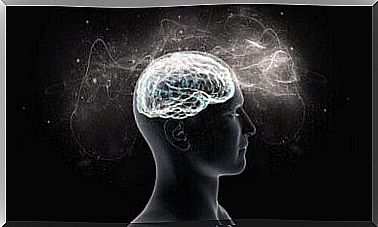Symptoms Of Premenstrual Dysphoric Disorder

Premenstrual Dysphoric Disorder (PMDD) is a serious condition, with symptoms that can become disabling, of Premenstrual Syndrome. The most adequate definition of Premenstrual Dysphoric Syndrome is given by Silvia Gaviria. She presents this disorder as a set of emotional, behavioral, and somatic symptoms that appear at the end of the luteal phase and resolve with menstruation.
In both premenstrual syndrome and premenstrual dysphoric disorder, there are physical and emotional symptoms. However, in premenstrual dysphoric disorder there are extreme mood swings that can even interrupt your work performance and damage your relationships.
In both types of syndrome, symptoms usually begin seven to ten days before the menstrual period and continue through the first few days of menstruation. Regarding physical symptoms, swelling, breast tenderness, fatigue and changes in sleep and eating habits (both types) may occur.

Epidemiology and development
Premenstrual dysphoria is a severe variant of premenstrual syndrome that affects approximately 5% of women of childbearing age. This disease is described from the first menstruation in many patients. Its prevalence increases between the third and fourth decade of life, with a tendency to remain until menopause. It shows spontaneous remission in a certain percentage of cases.
Symptoms have been reported to start or worsen after childbirth, with age, when starting or interrupting oral contraceptive use, or after tubal ligation.
Among the clinical variables associated with premenstrual dysphoric disorder is a history of major depressive disorder or postpartum depression, which also appear more frequently after the diagnosis of PMDD.
Causes
Premenstrual dysphoric disorder is caused by closely related genetic, neurobiological, and endocrine factors. Most researchers believe it may be an abnormal reaction to hormonal changes related to the menstrual cycle.
Studies have shown a connection between premenstrual dysphoric disorder and low serotonin levels. Hormonal changes can cause a decrease in serotonin, which leads to the symptoms of premenstrual dysphoric disorder.
Symptoms chart of premenstrual dysphoric disorder, according to the DSM and the CIE
After the edition of DSM III-R, this disorder became more heavily involved in psychiatry under the name premenstrual dysphoric disorder (PMDD). Later, in the DSM-IV, it emerged under the nomenclature of dysphoric disorder of the luteal phase.
In manuals such as the CIE-10, it was not considered a disorder, with differences in both its interpretation and definition in the bibliography. Premenstrual dysphoric disorder is included in depressive disorders in the new DSM-5.
To make an accurate diagnosis, the doctor must know the background and perform a physical examination. A calendar or symptom diary should be kept to help the physician diagnose premenstrual dysphoric disorder.
It takes five or more symptoms of premenstrual dysphoric disorder, including one mood-related symptom, to be diagnosed.
Diagnostic criteria for premenstrual dysphoric disorder in DSM-5
- A. In most menstrual cycles, at least five symptoms should be present in the last week before menstruation starts, begin to improve a few days after menstruation starts, and become minimal or disappear in the week following menstruation.
- B. One (or more) of the following symptoms must be present:
- Intense affective lability (oscillation).
- Intense irritability or anger or increased interpersonal conflicts.
- Intensely depressed mood, feeling of hopelessness or ideas of self-deprecation.
- Anxiety, tension and/or intense feeling of being aroused or with the nerves on edge.
- C. One (or more) of the following symptoms must also be present, up to a total of five symptoms when combined with Criterion B symptoms.
- Decreased interest in usual activities (eg work, school, friends, hobbies).
- Subjective difficulty in concentrating.
- Lethargy, easy fatigue or severe lack of energy.
- Significant change in appetite, excessive intake or craving for specific foods.
- Hypersomnia or insomnia.
- Feeling of agony or lack of control.
- Physical symptoms such as breast pain or swelling, joint or muscle pain, feeling “bloated” or weight gain.
- Note: symptoms on AC criteria must be met for most menstrual cycles from the previous year.
- D. Symptoms are associated with clinically significant distress.
- E. The disorder is not simply an exacerbation of symptoms of another disorder, such as major depressive disorder, panic disorder, persistent depressive disorder (dysthymia), or a personality disorder (although it can coexist with either).
- F. Criterion A should be confirmed by prospective daily assessments for at least two symptomatic cycles. (Note: Diagnosis can be made provisionally before this confirmation).
- G. Symptoms cannot be attributed to the physiological effects of a substance or to another medical condition (eg, hyperthyroidism).

Criticism of the diagnosis of premenstrual dysphoric disorder
The diagnostic categories of DSM-5 have raised controversy due to excessive pathologization, and premenstrual dysphoric disorder is at the heart of this controversy. This label appears on the DSM-5 within depressive disorders, to refer to women’s moods in the days prior to menstruation.
However, is it possible to transform half the population into people with mental disorders once a month? This is the debate. Is it really possible to make a natural process of the organism pathological by the reaction or symptoms that arouse in certain women during a few days of the month?









